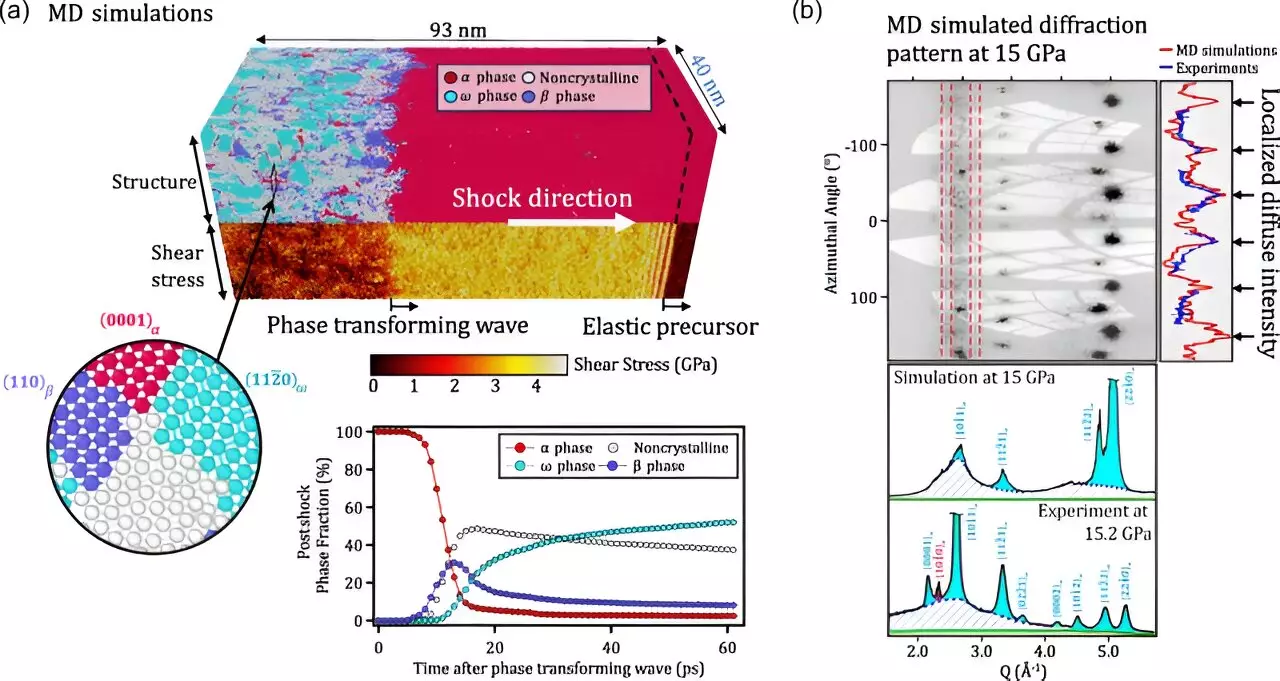In today’s technological landscape, the demand for materials capable of enduring extreme conditions is ever-present. Applications ranging from nuclear energy systems to military technology require materials that can withstand intense pressures, high temperatures, and corrosive environments. To advance these applications, researchers are focused on understanding the atomic behavior of these materials under stress, aiming to develop future materials that are not only stronger and lighter but also more cost-effective and sustainable.
Recent research conducted at Lawrence Livermore National Laboratory (LLNL) has cast new light on how zirconium, a metal known for its strength and low neutron absorption, behaves under high pressure. When subjected to intense compression, zirconium exhibits complex deformation patterns that challenge our previous understanding of metallic behavior. The study, published in prestigious journals, employed advanced techniques to analyze single crystal samples of zirconium, drawing significant conclusions about material performance at unprecedented stress levels.
Metals typically undergo plastic deformation, which is a permanent change in shape due to the movement of dislocations—defects in the crystal structure. Under normal circumstances, this deformation follows predictable paths. However, zirconium displayed an array of intricate responses, revealing additional factors influenced by the metal’s changing crystal structure as pressure increases. This insight is crucial; it means that designing predictive models for metal behavior requires a nuanced understanding of crystallographic planes and deformation directions.
To probe these complexities, LLNL scientists utilized cutting-edge femtosecond in-situ X-ray diffraction techniques to monitor zirconium under conditions mimicking those found in extreme environments. This methodology allowed researchers to capture real-time data on atomic movements and structural transformations, noting the emergence of atomic disorder—a phenomenon not previously observed in elemental metals. The presence of this disorder and the discovery of multiple pathways for phase transitions signal a profound shift in our comprehension of material behavior at high stress.
The implications of this study extend beyond zirconium. Insights gained may influence the understanding and development of various materials used in high-pressure contexts, especially in nuclear industries where zirconium alloys are pivotal as fuel rod cladding. As the study highlights a “rich tapestry” of atomic movements, the broader applications could help engineers design materials that are not just more resilient, but also capable of maintaining integrity in diverse extreme environments.
This groundbreaking research underscores the complexity and sophistication of materials science, particularly in the context of extreme conditions. By unlocking the secrets behind the intricate behaviors of metals like zirconium, scientists can pave the way for innovative applications across various industries. The continued exploration of material behavior at the atomic level is crucial for developing next-generation technologies that adhere to the rigorous demands of modern engineering and beyond. As researchers continue to unveil the complexities hidden beneath the surface of these materials, the potential for advancements in science and technology remains vast and promising.


Leave a Reply